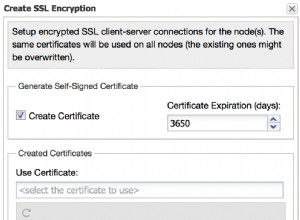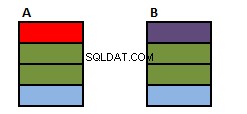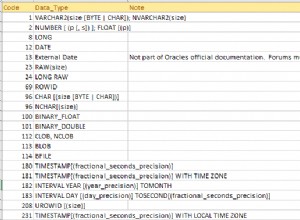returns setof refcursor nghĩa là bạn nhận được ResultSet thông thường trong đó mỗi "hàng" chứa khác ResultSet khi gọi getObject() :
Những điều sau đây phù hợp với tôi:
ResultSet rs = stmt.executeQuery("select * from usp_sel_article_initialdata_new1()");
if (rs.next())
{
// first result set returned
Object o = rs.getObject(1);
if (o instanceof ResultSet)
{
ResultSet rs1 = (ResultSet)o;
while (rs1.next())
{
int id = rs1.getInt(1);
String name = rs1.getString(2);
.... retrieve the other columns using the approriate getXXX() calls
}
}
}
if (rs.next())
{
// process second ResultSet
Object o = rs.getObject(1);
if (o instanceof ResultSet)
{
ResultSet rs2 = (ResultSet)o;
while (rs2.next())
{
......
}
}
}
Từ bên trong psql bạn cũng có thể sử dụng select * from usp_sel_article_initialdata_new1() bạn chỉ cần sử dụng FETCH ALL sau đó. Xem hướng dẫn sử dụng để biết ví dụ: http:// www. postgresql.org/docs/current/static/plpgsql-cursors.html#AEN59018
postgres=> select * from usp_sel_article_initialdata_new1();
usp_sel_article_initialdata_new1
----------------------------------
<unnamed portal 1>
<unnamed portal 2>
(2 rows)
postgres=> fetch all from "<unnamed portal 1>";
?column?
----------
1
(1 row)
postgres=> fetch all from "<unnamed portal 2>";
?column?
----------
2
(1 row)
postgres=>
(Tôi đã tạo một hàm giả cho ví dụ trên chỉ trả về một hàng duy nhất có giá trị 1 cho con trỏ đầu tiên và 2 cho con trỏ thứ hai)
Chỉnh sửa :
Để điều này hoạt động, điều này cần phải được chạy bên trong một giao dịch. Đối với tính năng tự động gửi phải được tắt:
connection.setAutoCommit(false);




